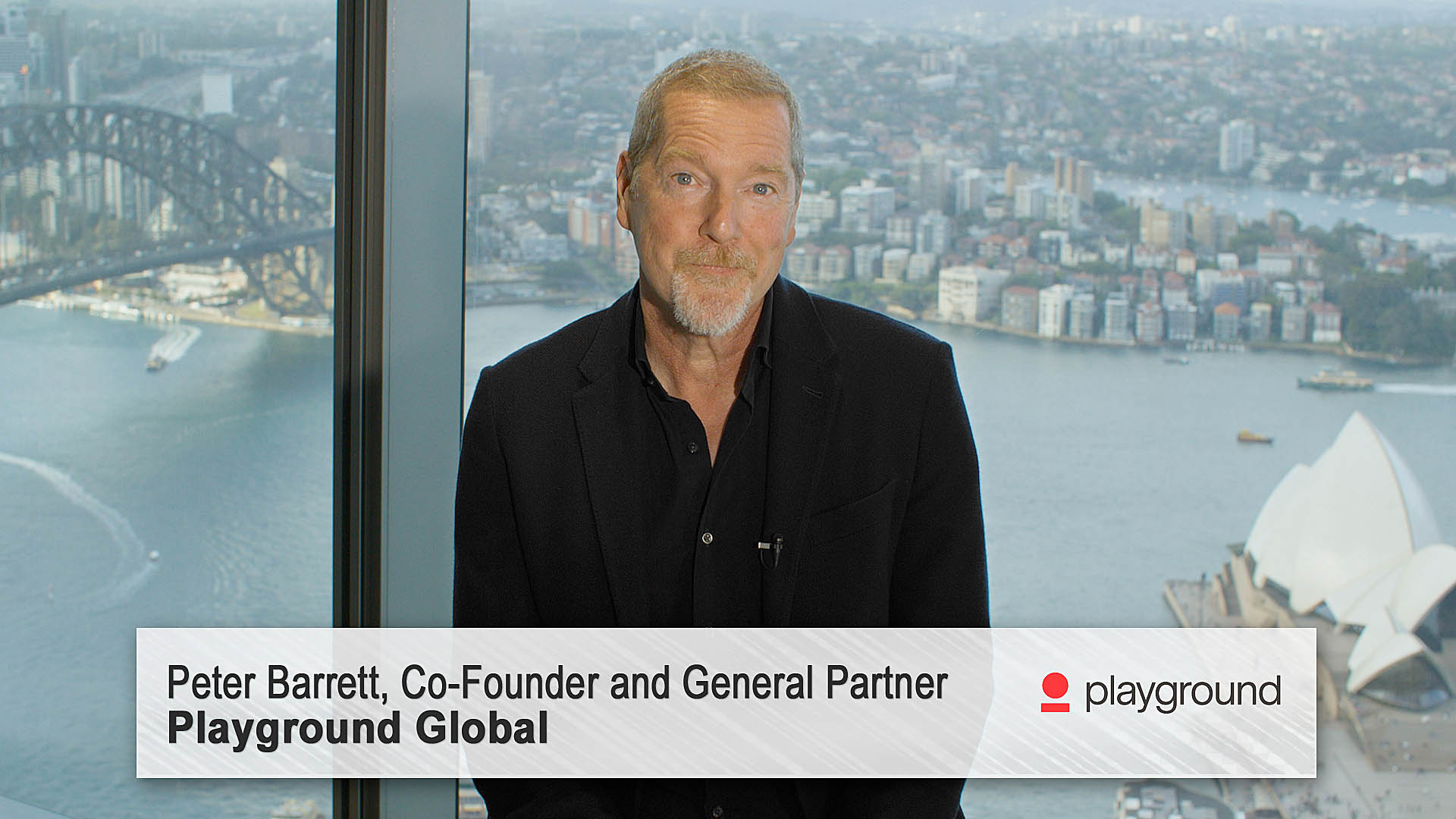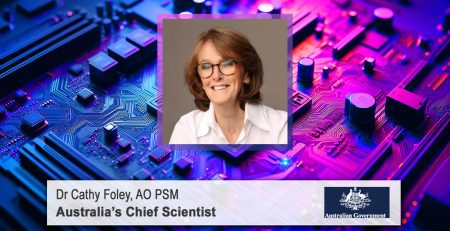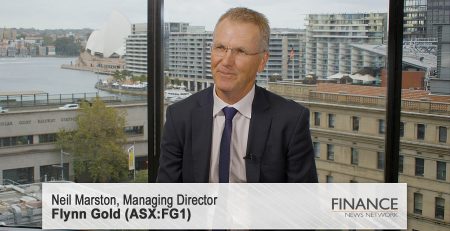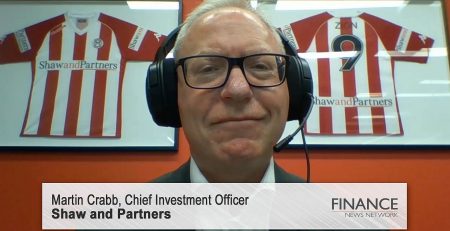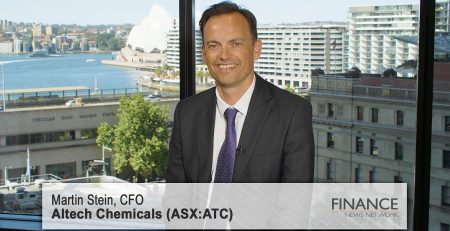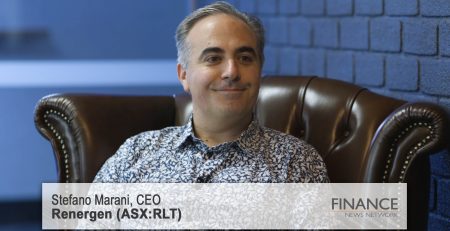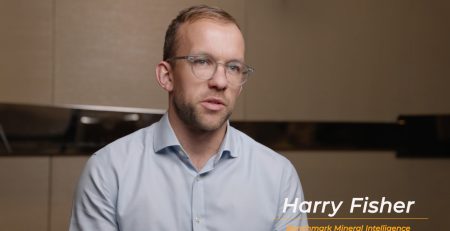Digital Playground’s Peter Barrett on creating a quantum ecosystem in Australia
In the keynote address for the inaugural Semiconductor Australia conference, Digital Playground Co-Founder and General Partner Peter Barrett discusses Australia's potential to lead in next-generation technology.
Peter Barrett: Welcome everybody to the inaugural Semiconductor Australia. I'm Peter Barrett. I'm Co-Founder and General Partner of Playground Global, a deep tech firm based in Silicon Valley. We invest across things that almost certainly won't work but will be consequential if they do, and that's in next-generation computation, both classical and quantum, in AI, in robotics, in logistics, infrastructure and things at the boundary of computation and life sciences. In fact, if you look at the technologies listed by the federal government of critical technologies in the national interest, we have pretty much companies in every one of those categories.
But, today, I want to talk about semiconductors and quantum, which is a particular focus of interest to us, and how we think those technologies evolve around the world – but, in particular, what role Australia has to play in the development of those underlying technologies.
Now, you may have noticed recently the incredible AI revolution that was an overnight success decades in the making that is driving the development of semiconductors and computation in a really dramatic and unprecedented way. And not only is it having effects at the top of the stack in the applications and services we experience, it's also driving change all the way down through every piece of physical infrastructure we use to do computation, and that's the way we design chips, the kinds of chips, the way we assemble those into systems, the wires that bind those systems together, the light sources we use to create those technologies, the lithography, the EDA design tools, the computational lithography. It's all in flux in a really exciting and unprecedented way, and we see really extraordinary opportunities, from the light source at the bottom of the stack to the applications on top, to create some fundamentally new companies and fundamentally new technologies. And we already have some examples of innovation in that change in Australia and would love to discuss opportunities to broaden those opportunities and companies in ways that may seem a little counterintuitive, but are absolutely timely.
Now, when people think about semiconductor manufacturing, often we think about a company called ASML (Advanced Semiconductor Materials Lithography) or TSMC (Taiwan Semiconductor Manufacturing Company) or Nvidia, and all of those companies are experiencing this rapid change. ASML, for example, creates the exotic form of light that they are uniquely capable of generating that exposes the patterns that makes our most sophisticated semiconductors. The way they create that light is rather extraordinary, by shooting droplets of tin with multiple lasers in a box that contains a mirror which is atomically smooth. It really is the crowning achievement of human civilization. And the fact that that process is so exotic, so difficult, is kind of an indication that we maybe are getting to the end of our abilities to continue to innovate in semiconductor manufacturing. But, like many of the things that are driving change in the stack, Moore's Law may not be as over as we think. Even though extreme ultraviolet light has "extreme" in the name, it's by no means the only way of progressing the design and implementation of semiconductors.
We have a company that has a different way of generating extreme ultraviolet light that offers a new lease on life on the roadmap for making smaller and smaller feature sizes in more and more exotic semiconductors. Taking technology which was originally designed as a directed energy weapon out of a US national lab, we can produce light of unprecedented power and purity, and produce semiconductors with smaller and smaller features at radically different price points and production levels. The new light source is scalable enough that it can make fabs of unprecedented productivity, but really change the way we design our smallest and most capable semiconductors. And that technology already exists in national labs for research for research, for making femtosecond videos of chemistry in action for exploring photosynthesis. And there's one just down the street from Playground at a place called Stanford Linear Accelerator. That device was never imagined to do lithography, but it turns out if you can make a very, very bright laser where you control the wavelength of light, that's precisely the sort of thing you need to make our most advanced semiconductors. And so companies like xLight are taking technologies that were never intended to be used for making computation and deploying it against probably our most difficult challenge in EV lithography.
Now, above that, when you get up the stack, you've made your exposure and you've made your mask, you have to think about how those components are orchestrated together into big systems. Now, time was you would be radical limited, you'd make a chip of a certain size, and that was as big as it was going to get. But now we're entering a phase where we are factoring these devices into chiplets, we're putting them together on things that are your dinner-plate interposes made of glass instead of organic substrate, we're wiring those things together with photonics, optics or silicon photonics, in new ways to get around the limitations of copper, and we're building them into systems of unprecedented size, right?
When you look at one of Nvidia's new NVL72 racks, which is sort of the gold standard for emerging AI technology, when you open up the back of the machine, it's got 5,000 copper cables in the back, right? We still have some way to go to rid ourselves of some of the old ways of doing things. But emerging technologies are available to do that, and we still have many degrees of freedom to architect systems of increasing complexity and increasing, increasing power.
And that goes not just for trying to make better silicon, but beyond silicon into exotic materials. The silicon technology we have today is subject to the Boltzmann tyranny of running at hundreds of millivolts and can only run at certain frequencies. Physics allows computation to happen at terahertz, not gigahertz. Physics allows electronics to switch at millivolts, not hundreds of millivolts. So, we've got lots of degrees of freedom. Moore's law really only applies to using existing materials and existing tools in the ways we're currently doing it. We don't have to stay in those lanes. And every time we break one of these rules, we'll find new degrees of freedom in new kinds of materials, new kinds of technologies, new kinds of tools, we get the opportunity to progress the computational technology that underpins all of civilization, right? We run on semiconductors, we run on computation. And so the paths forward are not just opportunities to create great companies, but to benefit everybody and create new opportunities for not only creating wealth, but creating abundance by deploying these new computational tools in novel ways.
And probably the greatest example of that is quantum computing. I'm on the board of PsiQuantum, and we're incredibly excited and delighted to be building the first million-qubit-class machine in Queensland. These extraordinary machines are capable of things that I don't think are widely understood, but they are years, not decades away, and I want to share some perspectives on why we think those devices are important.
We don't really know how to do chemistry today. The materials, the catalysts, the things that animate our industry are often discovered, not designed. And we don't know how basic drugs work. We don't know how acetaminophen works. We are just stumbling around in the dark. Now, it seems like we have a lot of agency over our physical world, but really many of the things that animate our civilisation, that animate our industries, are beyond the capability of our classical computers, right? To understand the quantum mechanical nature of nature makes it very, very difficult for our classical machines to simulate even basic chemical interactions. And the reason for that is for every electron that you add into the process of doing a chemical interaction, you have an exponential explosion in possible interactions with other electrons in the system, right? Nature is quantum mechanical and classic machines drown in the exponential complexity of it.
Quantum computers are different. They represent their internal state using the same weird quantum mechanical nature of nature, and allow you to directly map interactions in the physical world into the quantum state inside the machine.
And so, for the first time, we can design, instead of discover, our most important drugs, catalysts and materials, and it opens up an extraordinary design space which I think will influence certainly the way we build semiconductors and the way we build computation classically, but also completely change the way we think about drugs and industry.
So, I'll give you some examples of what that might look like because we know about weird materials with exotic properties that we don't understand, but we know are incredibly useful. And you may remember, last summer, there was this supposed room-temperature superconductor called LK-99 that was discovered in Korea. And as an example of the limitations of our current classical computation scientists, scientists, very clever scientists, from around the world took their best classical tools, and half of them said it was a room temperature superconductor, and half of them says it wasn't. So, they had to go to their kitchens, make some of the stuff, and of course, disappointingly, it wasn't a room-temperature superconductor, which is a pity because that would have been an extraordinary revolution in the way we transmit power, the way we generate power, the way we make motors, the way we make linear accelerators — all of these technologies that would be enabled by that one simple breakthrough of having a crystal structure that would yield materials with this exotic property of being able to conduct electricity without any resistance.
Now, if we had a large quantum computer on the order of a million qubits, that would allow us to design those kinds of materials rather than guess, and guessing is not going to get you anywhere with a material that has essentially infinite combinations of prosaic elements. But the design space for materials, these periodic crystals, is vast but well within the capabilities of quantum technologies. And there are many other examples of these weird crystal structures. For example, perovskites that could make solar panels two or three times more efficient. Or understanding phenomena like why, if you take a crystal made of nitrogen and iron, you suddenly get a magnet which is more powerful than any rare earth magnet, right? We know how to make that material. We stumbled across it. We have no idea how it works. We have no idea why its field strength is so strong. We have no idea why the type two superconductors we use to build fusion reactors work, right? We are stumbling around in the dark. But that era of darkness is about to come to an end because of the advent of large-scale quantum computing.
Now, Australia's always led, or always been a thought leader in quantum computing and in quantum sensing and in quantum algorithms. We punch ridiculously above our weight, and I'm very excited about the opportunity to invest in that ecosystem as it emerges. And having a large machine in Queensland will certainly catalyse, I think, many of those investments.
But I would also love the opportunity to invest in breakthrough Australian semiconductors, in breakthrough Australian semiconductor fabs. Wouldn't it be wonderful if we took some of the capital, the extraordinary capital that's here, three-and-a-half trillion dollars in our superannuation funds, for example, and built world-class fabs right here. The CHIPS and Ccience Acts in the US recognised that the US doesn't make any advanced semiconductors on its shore, and that they needed to change that. I think the same opportunity is afforded Australia.
We have extraordinary R&D talent. We have great institutions like ANFF (Australian National Fabrication Facility) here. Why don't we deploy capital to build world-class semiconductor fabs with next-generation light sources here? We have the capital. We can build the expertise. And we can build an ecosystem that gets the most important technology on earth manufactured somewhere which is both geologically stable and geopolitically stable. I think it's an extraordinary opportunity. Australia is unique in its ability to develop breakthrough R&D at places like CSIRO and extraordinary results in science and engineering at our academic institutions, and its ability to punch above its weight in these domains is evident in the publications that put us right at the top of the world. But our economic complexity is down at the bottom between Pakistan and Uganda. We've got to find technologies that leverage the capital and talent and translate those into big commercial outcomes. And I'm going to be spending a lot of time and capital here to try and find those opportunities, but would love the ecosystem to get behind the idea of building extraordinary diverse technologies around semiconductors, around quantum and their applications right here, so that if you are, you know, a brilliant graduate with domain expertise in quantum computing, you can work for a company in Australia rather than becoming a barista.
Now, I want to close with how I think about the opportunity broadly in these technologies and in this context. And one way of thinking about the impact is that, you know, you could imagine a world without metal. Our civilisation could still have nice wooden houses. You could build cathedrals even. It would be difficult working stone without iron tools, but we could do it. We could make movable type, we could print books, we could plow. We could have a culture. But there are phenomena that we simply wouldn't understand. We wouldn't understand electricity. We would not know electromagnetism. We'd not be able to build motors or electric light or AI. We wouldn't have silicon. We wouldn't have so many of the things that make our modern society work. But we simply wouldn't understand the phenomena. We'd be blind to it. We may not miss it, but I think we'd be missing out in a lot.
But when I think about the opportunity for quantum materials, we are living in a world without metal. The world of quantum materials is as different to this world as this world is to that world is without metals. And our ability to change that is years, not decades, away.
People should understand that Australia has all of the ingredients. It has absolutely world-class R&D. I think deploying PsiQuantum here is a huge step forward for the quantum ecosystem. We need to do that in other segments, and we need to be the world leaders in things like green metals. There's opportunities to be world leaders in next-generation materials that are derived from the quantum ecosystem. And those materials can be deployed to have Australia have a unique advantage in other forms of computation, other applications of exotic materials, of chemistries. All the ingredients are here. All it takes is a little bit of will and the application of capital in brave and focused ways. And sometimes it doesn't have to be billions of dollars to get a result. Sometimes handfuls of millions of dollars can really make something that'll change the world. And with the right application of capital and the right willingness and energy to invest in fundamental technologies and translating Australian R&D into extraordinary companies — with that will and that capital we can make that happen here in just a handful of years. Thanks very much.
Ends
Copyright 2024 – Finance News Network
Source: Finance News Network

